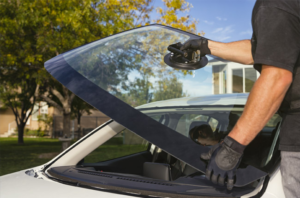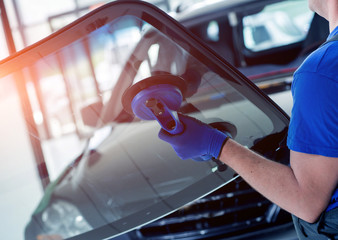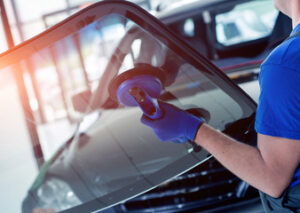A damaged windshield requires immediate attention. Windshield damage — including chips, cracks, and blemishes — can cause your visibility to suffer, and a replacement is expensive.
Fortunately, most chips and cracks can be repaired with repair kits. DIY kits typically have small plastic pedestals, bridges, resin, and curing strips. For more information, just visit Windshield Repair Ocala to proceed,

Imagine driving along on a lovely day, enjoying the sunshine, and moving at a sensible pace in traffic. You’re happy, relaxed, and enjoying the ride until you notice a speck of gravel or another small stone lodged in your windshield right in your line of sight. Your heart sinks as you realize that this will be one of those expensive repair jobs and that you’re about to lose your clear view and possibly increase your insurance premiums.
Glass welding is a common windshield repair technique to fuse shattered glass pieces such as chips and cracks. This process involves a combination of high temperatures and pressure applied to the cracked or broken glass to create a weld that holds the glass together. This is a popular method for repairing windshields and is also commonly used to improve window glass in buildings, aquariums, and other commercial glass structures. It is also often utilized in repairing glass art, mirrors, and other optical devices.
While covering up a chip with a bit of clear nail polish or super glue may be tempting, this is not recommended as it can lead to additional cracking. Instead, you should use a windshield repair kit to seal the crack, decreasing stress on the glass and preventing further fractures from developing. This type of kit is easy, but saving the work for a sunny day or a UV lamp is important, as the resins used must be cured with light.
Before beginning a windshield repair, thoroughly clean the damaged area with an automotive glass cleaner or acetone. This will help ensure that any dust or debris trapped in the crack is removed, as this could cause it to widen and spread once the repair is done. You should also ensure the windshield is completely dry before starting the process.
Next, find the syringe or applicator with your kit and load it with the resin according to its instructions. Once the needle is loaded, apply the resin to start the crack. Some kits have a dial or O-ring to adjust the amount of pressure being applied, so be sure to follow the instructions carefully. After using the resin, could you wait a few minutes for it to harden?
Using cutting-edge resin solidification, this windshield repair technique restores the strength and clarity of the glass. It’s also cheaper and more environmentally friendly than traditional windshield replacement, which requires manufacturing new material. It’s a safer option for the driver and passengers as well. Experts use a specialized resin to fill and stabilize the cracks and chips in the glass during the resin solidification process. The resin is injected into the damaged area and then hardened under UV light, which allows it to bond with the windshield. Once it’s cured, the damaged areas are virtually invisible.
Before the resin can be injected, professional cleaners painstakingly clean the damaged area to ensure it’s free from debris and dirt that could prevent proper adhesion. The technician will then inspect the damage to determine its size, type, and location. This will help them decide whether or not the crack is a good candidate for resin solidification. To get the best results, drivers should have their windshields repaired as soon as possible. This will allow the resin to cure under UV light before it gets wet or is exposed to contaminants.
The most common type of crack in a windshield is an edge crack. These cracks typically extend about six inches from the edge of the windshield. These cracks are caused by induced stress from installing the windshield to the car. An edge crack can be repaired by applying a vacuum at an entry point on the windscreen and injecting resin under pressure to flow into the break.
A floater crack, a star break in the lower corner of your windshield, can be repaired differently than an edge crack. Unlike an edge crack with mechanical stress and a gap, the floater crack only has a void in the middle. The floater crack is injected by sliding a repair tool over the two points in the middle and then injecting the crack.
Resins used for repairing these types of breaks are formulated to be more durable than the standard acrylic resins used for improving other types of cracks. They’re tested for tensile strength, transparency, elongation, and wetting. The best resins will have a high tensile strength while still being flexible and wetting. They should also be resistant to corrosion and have a long shelf life.
The current windshield repair method tends to result in a distorted appearance, frustrating drivers. Fortunately, there is a solution. This ultra-violet coating technique can help your windshield look new again.
During the repair process, technicians use UV-curing cationic epoxy to fill and bond the broken area of your windshield. This resin is tinted to provide additional UV protection, and it helps the repaired area blend in with the rest of the glass. It’s a great option for repairing small chips and cracks and takes just a few minutes to cure.
UV Coating is a highly effective way to protect printed materials, and it can increase the longevity of your print job. It is free of harmful solvents and releases no VOCs during curing, making it a healthier choice for humans and the environment. Moreover, it produces a smooth, glossy finish that will impress customers and clients.
This coating is perfect for any business that wants to add a professional touch to their products. It’s a great option for businesses that need to imprint their logo or contact information on their documents, and it’s also useful for companies that need to adhere labels or rubber stamps to their pieces.
As with other types of UV coating, it’s essential to use a high-quality product to ensure your print project looks its best. Using low-quality UV coating can result in a dull, yellowish finish that could be more attractive. Additionally, poor-quality UV coating may cause damage to the substrate over time.
The windshield repair industry uses UV-curing free radical acrylic resins for pit filling, stone breaks, edge cracks, and floater crack repair. These resins have acrylic or acrylate components; they are oxygen-inhibited and shrink upon curing. The invention avoids these problems by priming the crack with a moisture-removing solvent or acrylic acid before introducing the repair material. The invention eliminates oxygen inhibition and shrinkage, makes the adhesive more resilient, provides a lower viscosity for repairing edge cracks, and allows the resin in an edge crack to cure under the molding.
While these windshield repair kits are less effective than professional repairs, they can help prevent a crack or chip from spreading and make it less noticeable. If the damage is in the driver’s line of sight or a critical area, you may still need to get the windshield replaced by a professional. These DIY kits typically use epoxy resin to fill, seal, and stabilize minor damage measuring one inch or less in diameter.
These windshield repair kits are generally simple and inexpensive. They often include a suction cup, a resin tube, and a razor blade for applying the resin to the chip or crack. They work well on small bullseye cracks and stars and can often be completed in under thirty minutes.
Some windshield repair kit manufacturers offer a variety of products designed for different types of chips and cracks. When selecting a kit, look for a high-quality resin that will blend into the glass and not stand out like a blemish after it is applied. The resin should also be thick enough to resist the effects of temperature changes and weather conditions.
The best kit will have clear instructions, easy-to-follow photos, or a video. This will make it easier for new drivers to understand the process and get a good result. It’s also important to check the temperature tolerances of the resin, as some can seize up or fail to set if applied in cold weather.
When choosing a windshield repair kit, you must read the user reviews and ratings to select the product that best meets your needs. Some kits have a limited warranty, and some may not be suitable for all types of damage. It’s also good to consult an auto glass repair shop for additional tips and advice.
Although DIY kits are a great way to save money, they can take more work for beginners to get the right results. If the resin doesn’t adhere properly or fails under certain environmental conditions, it can lead to further damage and the need to replace the entire windshield.



